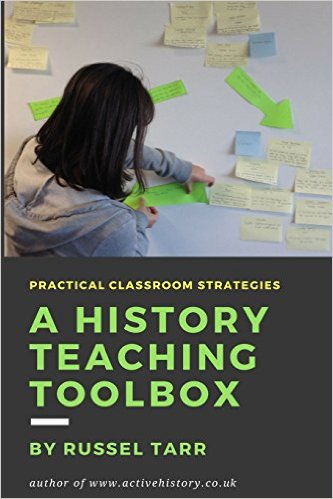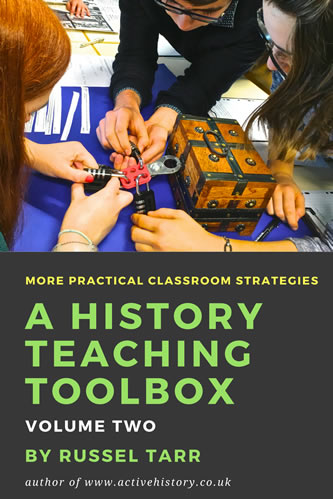In this worksheet GCSE history students analyse one of Hitler’s speeches to determine how the Third Reich justified the Nazi policy of “Kinder, Kirche, Kuche”. They then categorise his actions according to whether they encouraged women to stay at home or have more babies.
Month: June 2008
The Renaissance – End of Unit Test / Assessment
Following directly on from the classroom debate, students then write an essay. This worksheet contains detailed instructions on how to link the characters together rather than simply focusing on what each one individually contributed. A clear markscheme is also provided; I get each student to mark 4 different essays, then we collate all the marks…
Youth Policies: [2] Youth Organisations in Hitler’s Third Reich
GCSE history students compare the Hitler Youth and the League of German Maidens by constructing a dialogue designed to highlight the positive and negative features about each.
The Renaissance – Who was the most important person of the Renaissance?
A detailed lesson plan for year 8 history students. A class list is put into the Fruit Machine Name Picker at www.classtools.net to choose the Renaissance character each student should produce a research project on. This Renaissance project will be written in the first person to ensure that the student reads the information, under three…
Nazi Youth Policies: [1] Schools in the Third Reich
Youth Policies: [1] Schools Students match entries from Nazi School Textbooks to the subjects they describe, then each student in the class has a “Napola” school report written for them by several people in the class.
1453 Siege of Constantinople
An introductory worksheet. Perhaps the main reason why the Renaissance took off in Italy – this activity gets the narrative across in an engaging way. Students are given an interactive “news feed” of events, then can choose to produce EITHER a biased news report in Publisher OR a radio broadcast using their microphone OR a…
Nazi Germany – Social Policies [3]: The Moral Maze
Social Policies [3]: The Moral Maze: Students are presented with a logical defence of the principles of Eugenics and Social Darwinism as they existed in the Third Reich. They are then asked how they would nevertheless challenge some of its assertions both on rational and on moral grounds. One to get them thinking and debating!
Bayeux Tapestry Slideshow
View a series of Flash animations from the Bayeux Tapestry with analysis of their meaning. Designed to accompany the Year 7 History worksheet that comes with the Battle of Hastings Decision Making Simulation.
Nazi Social Policies [2]: The European Dimension of Social Darwinism
A stimulating worksheet in which students are shown how many of Hitler’s ideas stemmed from social darwinism theories and practices in Europe and America which were popular at the time (and since). A crucial worksheet which helps students get away from the idea that Hitler was a peculiarly “German” problem.
Cathars – Quiz
A new quiz for Year 8 history students.
Living Graph
A “Living Graph” encourages students not only to select the most important events within a topic, but also to rate them against criteria such as success and failure, strength and weakness and so on.
Venn Diagram
A Venn diagram is a classic way of getting students to compare and contrast the similarities and differences between three key events, concepts or people. Characteristics shared in common go in the central area; those shared by just two factors go in the area where those two circles overlap; characteristics possessed by just one go…
GCSE History – Nazi Germany Social Policies: Overview
Students are divided into groups to investigate Nazi social policies towards undesirables and untermenschen. They are instructed how to organise a PowerPoint show to give to the rest of the class and the findings are recorded in a grid.
Reformation Historiography [3]: What was the state of the Catholic Church on the eve of the Reformation?
What was the state of the Catholic Church on the eve of the Reformation? – Historians bitterly argue as to whether the Catholic Church was corrupt and unpopular on the eve of the Reformation. This worksheet allows students to compare the different viewpoints and consider the evidence for each.
The Kronstadt Uprising, 1921: Lenin’s Year of Crisis
A new interactive exercise for A-Level / IB History students in which students are presented with a series of news feeds about the Kronstadt Rebellion of 1921 which spelt the end of War Communism and the introduction of the New Economic Policy (NEP).
Reformation Historiography [2]: Was the Reformation an example of a German Nationalist revolution?
Students compare the views of Ranke, Steinmetz and Reinhard in this worksheet – both in terms of the geographical area which each said the Reformation should cover, and also in terms of whether they regarded the Reformation as being motivated by religious or social factors.
Reformation Historiography [1]: What time period should be used in a study of the German Reformation?
What time period should be used in a study of the German Reformation? – This worksheet encourages students to compare the views of Bainton, Oberman and Schilling through the means of a classroom debate.

